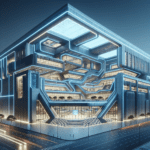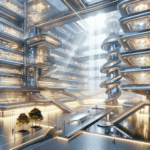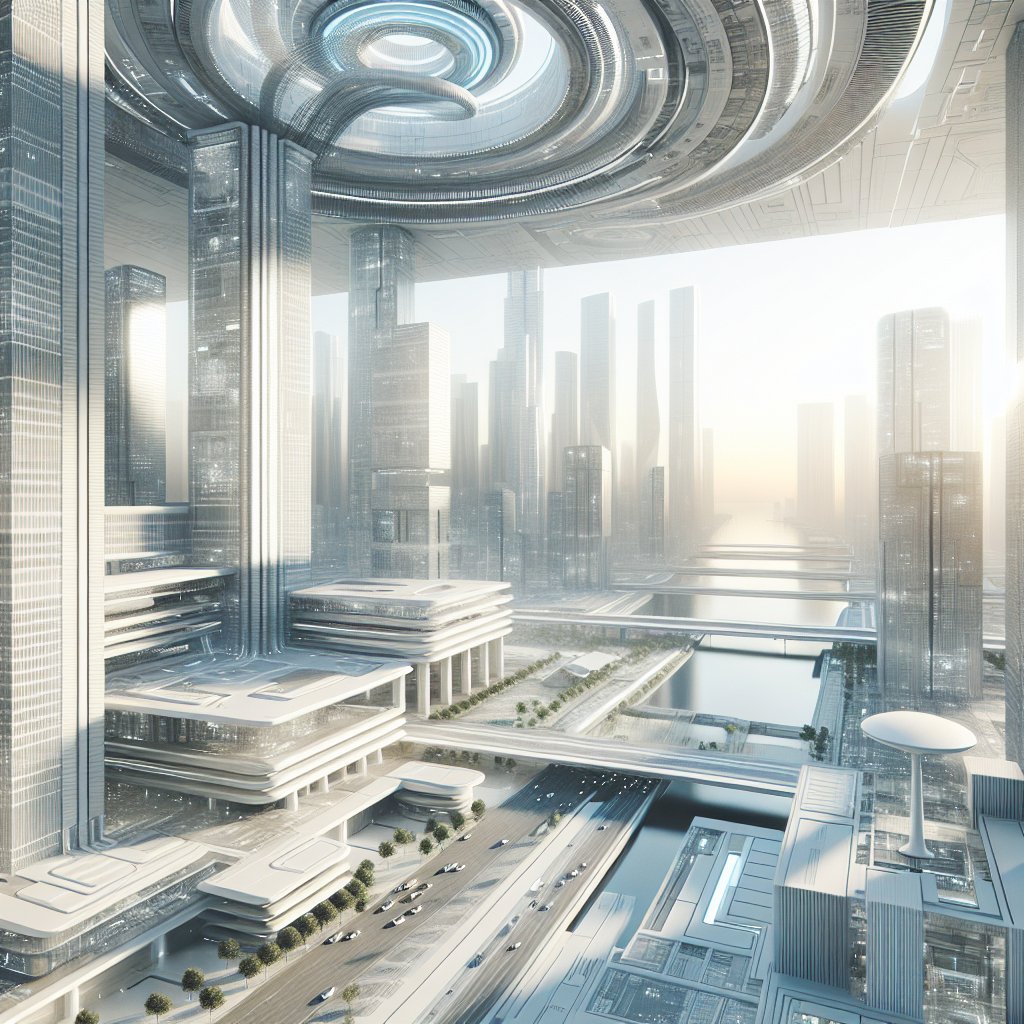Prefabricated buildings, once considered a niche segment of the construction industry, are now at the forefront of futuristic architecture. As urbanization accelerates and environmental concerns become more pressing, the demand for efficient, sustainable, and innovative building solutions is growing. Prefabrication, with its promise of reduced waste, faster construction times, and enhanced design flexibility, is poised to revolutionize the way we think about building our cities.
The Rise of Prefabricated Architecture
The concept of prefabrication is not new; it dates back to the early 20th century when architects and builders began experimenting with modular construction techniques. However, it is only in recent years that prefabricated buildings have gained significant traction, thanks to advancements in technology and a shift in societal attitudes towards sustainability and efficiency.
One of the primary drivers of this trend is the increasing urban population. As cities expand, the need for quick and efficient construction methods becomes paramount. Prefabricated buildings offer a solution by allowing for the mass production of building components in a controlled factory environment. This not only speeds up the construction process but also ensures a higher level of quality control.
Moreover, the environmental benefits of prefabrication cannot be overstated. Traditional construction methods are notorious for generating significant amounts of waste and consuming large quantities of resources. In contrast, prefabricated buildings are designed to minimize waste, as components are manufactured to precise specifications, reducing the need for on-site adjustments and excess material usage.
Another factor contributing to the rise of prefabricated architecture is the growing acceptance of modern design aesthetics. Once criticized for their boxy and uninspired appearances, prefabricated buildings have evolved to embrace a wide range of architectural styles. Advances in materials and construction techniques have enabled architects to create visually stunning structures that rival traditional buildings in both form and function.
Technological Innovations Driving Prefabrication
The future of prefabricated buildings is being shaped by a host of technological innovations that are pushing the boundaries of what is possible in construction. One of the most significant developments is the use of Building Information Modeling (BIM) technology. BIM allows architects and engineers to create detailed digital models of buildings, facilitating better collaboration and communication throughout the design and construction process.
With BIM, every aspect of a building can be meticulously planned and visualized before construction begins. This not only helps to identify potential issues early on but also allows for more accurate cost estimations and scheduling. As a result, projects can be completed more efficiently and with fewer unexpected delays.
Another groundbreaking technology impacting prefabrication is 3D printing. While still in its nascent stages, 3D printing has the potential to revolutionize the way building components are manufactured. By using advanced materials and printing techniques, it is possible to create complex and customized components that would be difficult or impossible to produce using traditional methods.
Furthermore, the integration of smart technologies into prefabricated buildings is opening up new possibilities for energy efficiency and occupant comfort. Smart sensors and systems can be embedded into building components during the manufacturing process, allowing for real-time monitoring and control of energy usage, lighting, and climate conditions. This not only enhances the sustainability of prefabricated buildings but also improves the quality of life for their occupants.
As these technologies continue to evolve, the potential for prefabricated buildings to transform the architectural landscape is immense. By embracing innovation and sustainability, prefabrication is set to play a crucial role in shaping the cities of the future.
Challenges and Opportunities
Despite the many advantages of prefabricated buildings, there are still challenges that must be addressed to fully realize their potential. One of the primary obstacles is the perception of prefabrication as a low-quality or temporary solution. Overcoming this stigma requires continued efforts to showcase the durability, design flexibility, and long-term benefits of prefabricated structures.
Additionally, the construction industry must adapt to new ways of working. Prefabrication requires a shift in mindset from traditional on-site construction to a more collaborative and integrated approach. This involves rethinking supply chains, investing in new technologies, and fostering partnerships between architects, engineers, manufacturers, and builders.
Regulatory hurdles also pose a challenge, as building codes and standards have traditionally been designed with conventional construction methods in mind. To support the growth of prefabricated architecture, it is essential for policymakers to update regulations and create frameworks that encourage innovation and sustainability.
Despite these challenges, the opportunities for prefabricated buildings are vast. As the world grapples with the effects of climate change and urbanization, the demand for sustainable and efficient building solutions will only increase. Prefabrication offers a viable path forward, providing a means to construct high-quality, environmentally friendly buildings at scale.
In conclusion, the future of prefabricated buildings is bright, with the potential to redefine the way we design and construct our built environment. By embracing technological advancements and addressing existing challenges, prefabrication can lead the way towards a more sustainable and innovative architectural future.










